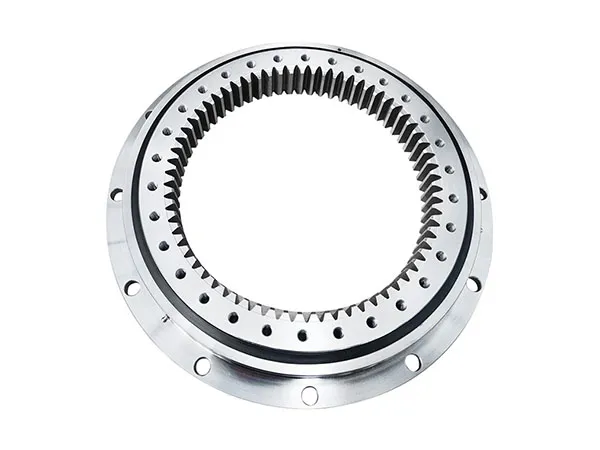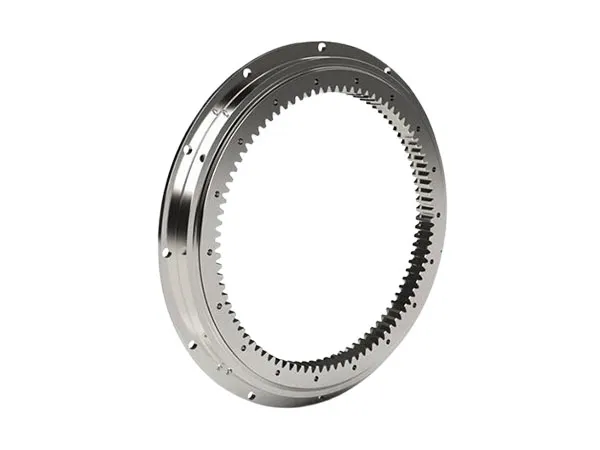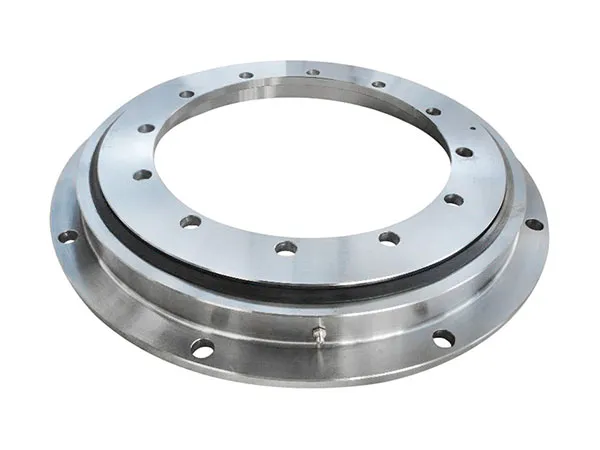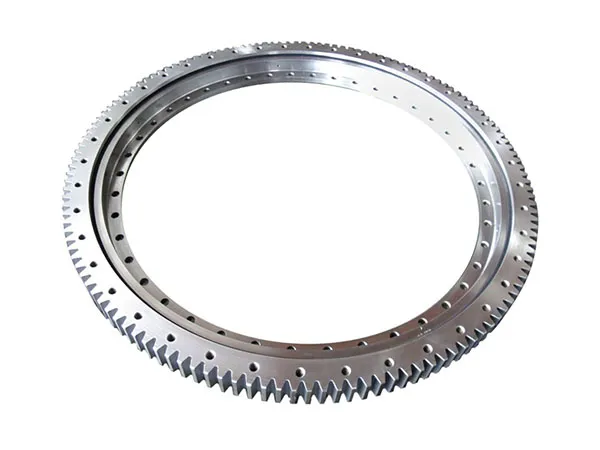- +86 13837949030 +86 15890619536
- info@lymcbearings.com export@lymcbearings.com
- Luoxin Industrial Cluster, Luoyang City,Henan Province,China
Time:2025-01-23 13:25:18 Source:Luoyang MC Bearing Technology Co.,Ltd.
Flange slewing bearings are complex components subjected to a variety of forces and movements. The noise they generate can be indicative of various issues. It's important to pay close attention to the specific characteristics of the noise.For the flange slewing bearing noise problem, the following are some effective solutions and suggestions.
Grinding: Usually associated with metal-to-metal contact, indicating wear, lack of lubrication, or contamination.
Squealing/Screeching: Often caused by insufficient lubrication, dry running, or high friction between bearing surfaces.
Clicking/Popping: Could indicate loose rolling elements, raceway damage, or excessive clearance in the bearing.
Knocking: Might suggest damage to the bearing, loose bolts, or mounting issues.
Rumbling/Roaring: Can be a sign of excessive wear, bearing preload issues, or contamination.
Intermittent Noise: Could point to a specific problem occurring under certain conditions, like a particular angle of rotation or load.
Consistent Noise: Indicates a more persistent issue that may need immediate attention.

During Rotation: Almost always points to a bearing-related issue.
At Specific Angles: May suggest localized damage, uneven loading, or mounting issues.
Under Load: Overloading, inadequate lubrication, or wear.
At Start-up/Shut-down: Can indicate lubrication problems or excessive preload.
Speed-Related: May suggest lubrication issues or bearing internal geometry problems.
Location of Noise: Try to pinpoint the area where the noise is coming from as accurately as possible.

Lubrication Deficiencies (Most Common):
Insufficient Grease: Not enough lubricant reaching the contact zones between raceways and rolling elements leads to increased friction and noise.
Incorrect Grease Type: Using the wrong grease can lead to inadequate lubrication, incompatibility with seals, or accelerated wear.
Degraded Grease: Old or contaminated grease loses its lubricating properties, causing noise and wear.
Insufficient Relubrication: Failing to follow the recommended relubrication schedule leads to lubricant depletion.
Contamination Issues:
Ingress of Foreign Matter: Dirt, sand, metal particles, and other contaminants act as abrasives, damaging the raceways and rolling elements and causing noise.
Seal Failure: Worn or damaged seals allow contaminants to enter the bearing.
Wear and Damage:
Raceway Wear: Wear on the raceway surfaces can cause rolling elements to make an audible noise.
Rolling Element Damage: Pitting, spalling, or cracking on the rolling elements (balls or rollers) leads to noise and vibration.
False Brinelling: Vibration during transport or storage can cause damage to raceways if the bearing is not properly supported.
Preload Problems:
Excessive Preload: Can lead to increased friction, heat, and noise.
Insufficient Preload: Can cause loose rolling elements, vibration, and clicking noises.
Mounting Issues (Often Overlooked):
Misalignment: Not properly aligned, the bearing will be subjected to uneven loading, causing noise and premature failure.
Incorrect Fastening Torque: Insufficient or excessive bolt torque can cause mounting issues and lead to noise.
Inadequate Support Structure: The foundation or mounting structure isn't rigid enough, leading to vibrations and noise.
Poor Fit: If the bearing doesn't fit correctly on the mounting surface, it can induce stresses and noise.
Internal Bearing Issues:
Manufacturing Defects: Imperfections in bearing raceways or rolling elements.
Internal Clearance Issues: Incorrect clearance between the rolling elements and raceways.

Operating Conditions:
Overloading: Exceeding the bearing's load capacity.
Vibrations: Can lead to wear and increased noise.
Extreme Temperatures: Can affect lubrication and bearing material properties.
Harsh Environments: Corrosive or dusty environments can accelerate wear and damage.
How to Approach Troubleshooting Slewing Bearing Noise:
Precise Noise Diagnosis: Pay very close attention to the noise (type, timing, location) as outlined above.
Lubrication Review:
Check the correct lubricant is used per the manual.
Verify lubrication points are receiving sufficient lubricant.
Inspect grease quality and condition (if possible).
Check relubrication schedule.
Visual Inspection: Carefully inspect the bearing, seals, and surrounding components for:
Damage (cracks, dents, rust, pitting)
Contamination (dirt, grit, metal particles)
Grease leaks or dry spots.
Mounting Checks:
Verify alignment with a dial indicator.
Check the torque of mounting bolts.
Inspect mounting surfaces for damage or defects.
Preload Check: Check preload to ensure it’s within manufacturer's specifications.
Operating Condition Review:
Ensure the bearing is operating within its load, speed, and temperature limits.
Address any excessive vibrations.
Consider a Vibration Analysis: This can help pinpoint more specific problems and identify frequencies associated with specific defects.
Document Everything: Keep records of observations and actions taken.
Consult Experts: If the issue is not resolvable, it's best to contact a bearing specialist or engineer for expert analysis and guidance.

Key Takeaways for Slewing Bearing Noise:
Lubrication is paramount: Address lubrication issues first.
Contamination control is essential: Ensure proper sealing.
Proper mounting matters: Misalignment is a common culprit.
Operating conditions must be within spec: Overloading and harsh environments are detrimental.
Don't ignore the details: Pay attention to all factors – from the type of noise to when it occurs.
By taking a methodical approach to troubleshooting, you can identify and address the root cause of the noise and improve the performance and reliability of your equipment.